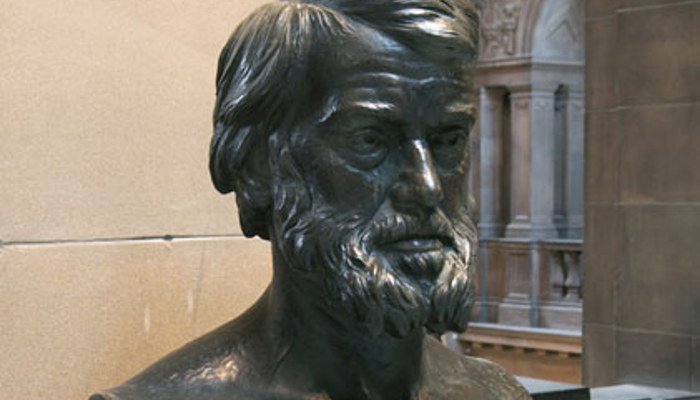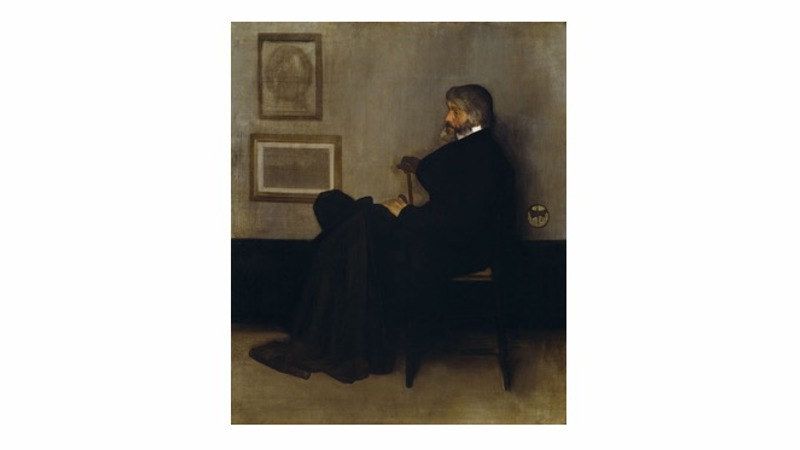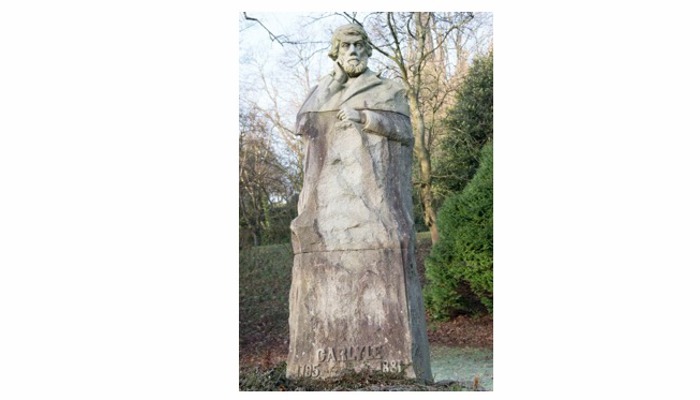
Thomas Carlyle, historian, writer, racist

James McNeill Whistler, Arrangement in Grey and Black, No. 2: Portrait of Thomas Carlyle, c.1873–74
671
Images © CSG CIC Glasgow Museums Collection
18th November 2020
Carlyle is famous for his comprehensive but unconventional historical works, notably The French Revolution (3 vols, 1837) and Frederick the Great (6 vols, 1858–65). His writings show a strong personal conviction and concern for socioeconomic inequalities. In ‘Signs of the Times’, published in the Edinburgh Review (1829), he criticised the Industrial Revolution for enslaving people, creating a mechanised workforce, automatons incapable of individual thought or creativity. In Chartism (1839) he expressed sympathy for the living conditions of the urban poor, condemning the greed of industrialists. In Past and Present (1843), Victorian Britain with its poverty, unemployment, low wages and exploitation was contrasted adversely with medieval society. However, Carlyle’s humanitarian concerns only extended to the white working classes and his opinions of people of colour and views on slavery were shockingly expressed in his ‘Occasional Discourse on the Negro Question’, published anonymously in Fraser’s Magazine in February 1849. Although he created narrative distance, taking on the guise of a journalist reporting on a lecture, the views were unequivocally Carlyle’s own. Containing vicious racial caricature and insult, with distressing imperialist metaphors, it makes painful reading.
Carlyle complained that emancipated black people in the West Indies were lazy, working little but eating well, benefitting from the favourable climate and abundance of tropical fruit, while sugar cane on British plantations rotted due to lack of labour. In the context of recession and unemployment back in Britain and the potato famine in Ireland, this was an emotive accusation. It was also blatantly untrue according to figures produced by the Anti-Slavery Society in 1847–49, which showed that sugar production had in fact gone up. However, the emancipation of slaves in the British Empire in 1833 had created a labour problem that had cut into profit margins, exacerbated in 1846 when the Sugar Duties Act ended subsidies for British plantation owners. According to Carlyle, black people had no right to own land and should be forced ‘with beneficent whip’ to work for white people, who were ‘born wiser’, their superiority established by God. He described black people as showing no interest in commerce, arts, politics and social development; they were ‘pigs with pumpkins’. Although he claimed to advocate a kind of feudal serfdom under the lordship of white masters, the permanent servitude he described amounted to a return to slavery.
Images


Carlyle’s article caused outrage among liberals. It provoked his former friend, the political economist John Stuart Mill (1806–1873), to protest in a letter to the editor, in which he objected to Carlyle’s dehumanisation of people of colour and standpoint on slavery; however, Mill’s own statements on equality were expressed within a colonial mindset which showed how ingrained racial superiority was, even among liberals. Carlyle showed no remorse, publishing his article in America in 1850 under the title ‘West India Emancipation’ where it was condemned by abolitionists of the northern states – the American poet John Greenleaf Whittier called it ‘unspeakably wicked’ – but praised by the pro-slavery south. On 7 February 1850 Carlyle wrote that his article had ‘aroused the ire of all philanthropists to quite unexpected pitch’. He increased his provocation in 1853 with a revised and expanded version with the even more offensive title, Occasional Discourse on the Nigger Question, in which the fictional Senator Hickory Buckskin, based on Prof Nathaniel Beverly Tucker of Virginia, with whom Carlyle was in correspondence, argued that the southern states should secede from the Union and join with the West Indies to form an empire of slavery.
Carlyle has always been a contentious figure, both criticised and celebrated for his opinionated and partisan writings with their weighty rhetoric. However, discussion around the man, his writings and his memorialisation in painting and sculpture, cannot turn a blind eye to the inexcusable racism underlying his philosophies.
Dr Jo Meacock,
Curator of British Art
